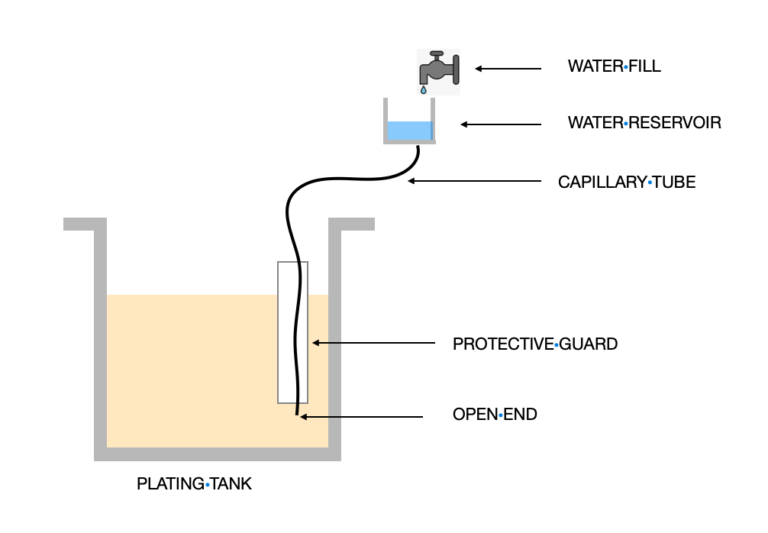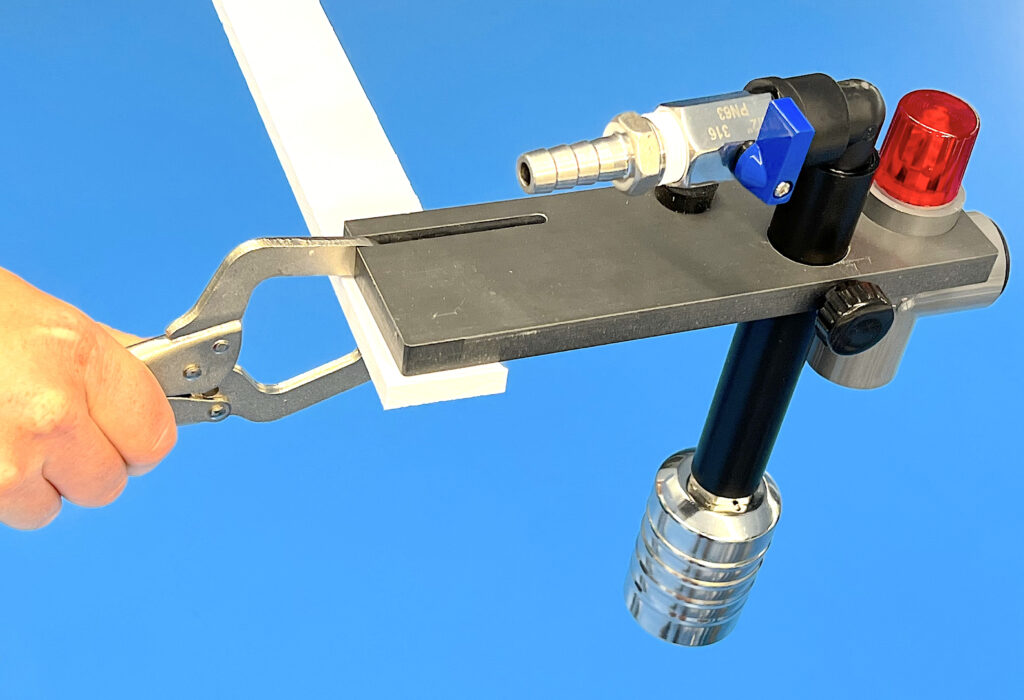Maintaining water level in plating tanks is an ongoing challenge in the plating industry. Spills are common which cost platers cleanup time, lost chemistry, lab time correcting tank chemistry, possibly bad parts, and even environmental violations. Various approaches to solving the problem have included timing the filling, manual filling with either hoses or hand valves, level sensors, and others. But which is the best way?
TIMING
Timing could work in theory if the amount of water needed was the same every fill, and if the rate of water flow form the faucet was consistent. The problem is that the timer doesn’t have any feedback to stop at the perfect liquid level. So, the only solution is to make it a “shot” timer that dispenses a safe amount each time a button is pressed. The result is that the tank is never filled to the ideal level.
HOSE FILLING TANKS
An age-old method that isn’t as cheap as it seems when you consider costly operator time, and costlier overfills.
AUTOMATIC LEVEL CONTROLS
Automatic level controls like float switch controls are a great way to accomplish the job. Cost is the problem: each tank needs its own dedicated level controller device, and associated solenoid valve. Add to that the cost of the electrical and plumbing installation and you can see why there are plenty of plating tanks without automatic filling. In addition, if the system goes haywire, there is usually no alarm. (add more cost for this)
Gravity filling relies on a capillary tube that is small enough in diameter (compared to its length) that the plating solution does not diffuse fast enough to backflow into the water source. A good minimum length for the capillary tube would be 100 tube diameters. It is an elegant solution that I have used one myself in my plating days. It does require quite a bit skill to fabricate, and a bit of tweaking to set the height of the reservoir. In addition, the water bowl must be kept full, so the problem of filling is not eliminated, its just moved from the plating tank to a water tank. There is still merit to this because it transfers the calamity of a valuable plating tank overfilling, to a water vessel overfilling. And finally, this method is limited to solutions that are substantially heavier than water.
AUTOMATIC HOSE FILLER
A Gizmo Engineering product that secures the hose to the tank, and shuts off the hose flow automatically. This frees the operator to “fill and forget”. He can safely walk away from the tank and the fill will stop when the level is sufficient. This device makes hose filling tanks practical.
When equipped with an optional tank alarm, the operator can get an early warning announcing when the tank is close to full. This means the operator saves some time by eliminating the need to check back to see when the tank is full. It also serves as an emergency overfill alarm. Gizmo web page on the Auto Hoze®.



